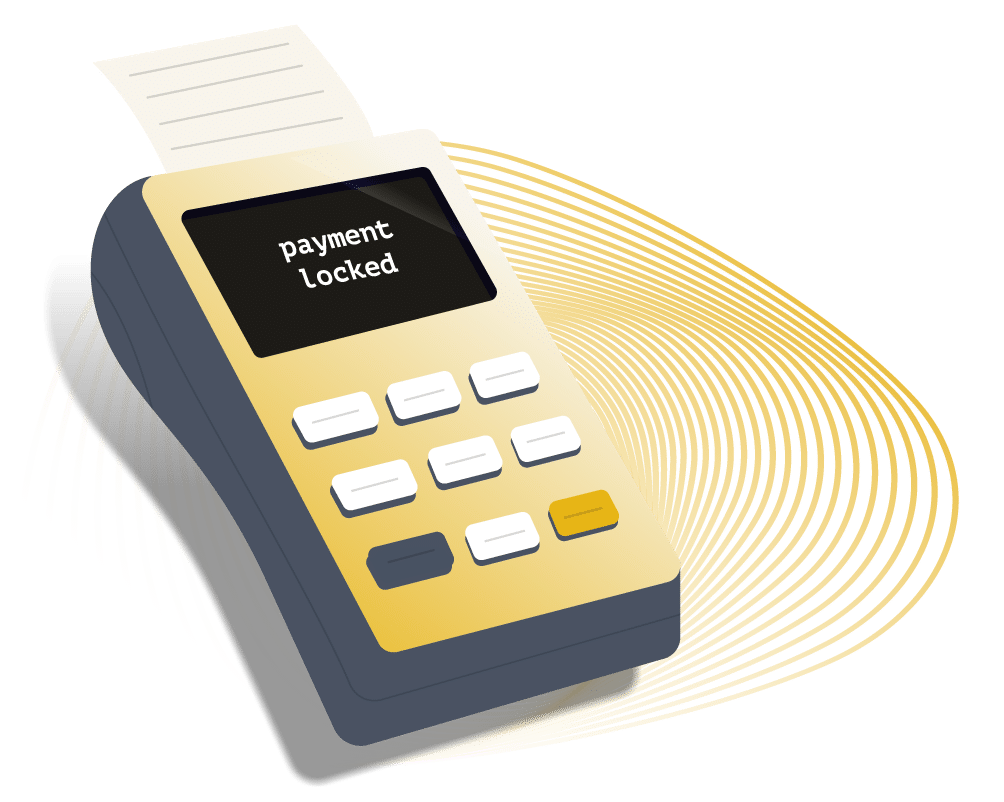Covering Expenses: Reserve Funds Held By Processors
Global Legal Law Firm has been representing clients in electronic payments litigation cases since 2008. Located in San Diego and Los Angeles, we serve clients in Southern California and throughout the United States.
If you have been encountering problems with any kind of payment processing, our experienced attorneys will give you the guidance you need to resolve your reserve fund dispute. With our lawyers on your side, you will be able to confidently navigate the bumpy landscape of credit card payments.
Our law firm has advised a wide variety of entities, from agents to credit card companies to Independent Sales Organizations (ISOs). We have also worked with a wide variety of high-risk merchant accounts and have the expertise and relationships to help you in sticky situations.
Read on to learn more about why you need a reserve fund and how our skilled attorneys can help.

Reserve Funds – Everything you need to know
What is a reserve fund?
A reserve fund is a type of savings account that an organization puts aside to meet future obligations or costs.
If you are a high-risk merchant, your bank will probably require you to have a minimum reserve fund to protect itself. Low risk merchants are not usually required to set aside a reserve fund unless they have a low credit score. The amount of the rolling reserve will be determined by the processor based on a number of different factors. Some reasons why your business may be deemed as a high-risk merchant account are as follows: high ratio chargebacks, accepting foreign currency sales, poor or nonexistent credit history, and poor credit card processing history.
Otherwise, your bank may just require you to have a rolling reserve, which takes 5 to 10 percent of your credit card sales and holds them for some time before releasing the funds to you. A rolling reserve will not require you to have a certain amount of held funds in your reserve account.
Who is Considered a High-Risk Merchant?
An example of a business that would be considered a high-risk merchant is someone in the tobacco and e-vaping industry due to the long history of fraud found in this industry. Many tobacco merchants have an above-average rate of credit card reversal. This usually ends up with a large number of customers who file chargebacks. Some others are nutraceutical companies and adult-themed websites, to name a couple.


How to Legally Get Processors to Return Reserve Funds
Although process servers initially withhold funds to protect the merchant and credit card provider from chargebacks, they should be returned once the business is established or the processor agreement is terminated. In some cases, the processor attempts to keep reserve funds as a means of further protecting their financial interests.
Reserves in credit card processing can reduce your business’ financial liquidity. In addition, while they sit in the processor’s reserve, the reserve funds do not earn the interest you would earn if your funds were in a savings, money market, or other interest-bearing account.
If you believe your reserve funds are being held illegally, there are steps you can take to request their return. Rather than letting your funds sit idle in the processor’s hands where they can be eaten up, try the following tactics:
Request a Quicker Turnaround
Many credit card processors return merchant account reserve funds within 180 days. However, this deadline is not set in stone. For example, a time frame might be increased if the processor establishes a rolling reserve fund or they believe that your business risk level has increased. While processors often keep reserve funds for the maximum time frame, there is no requirement for them to do so. If your business is in good standing, you can request that they return the funds more quickly. Contact Global Legal for assistance.
Challenge Their Reasons for Keeping the Reserve
Processors have the right to retain merchant reserve funds if they have reason to believe that your business transactions are high risk. If you can successfully challenge their assumptions about the stability of your business, you can renegotiate both how long they hold your funds and how high their hold limit is for your account.
For example, if your business shows significant income and few refunds or chargebacks, you can use this as evidence that the reserve is excessive or unnecessary. If the reserve is particularly high or burdensome, you can also use this evidence to show that the processor is placing an unnecessary burden on your business.
Global Legal can help you gather the necessary evidence to support your claim and can handle negotiations with your processor to ensure you are getting
the best possible hold limit and duration.
Challenge Their Business Practices
Some processors try to keep reserve funds because it is their “business practice.” In essence, they will claim that they always hold the full reserve funds for a specific period or amount, regardless of the circumstances. However, this is not a legal practice, and they must be able to show that they have good reason for retaining the reserve fund.
FAQs
Some processors terminate processing agreements unexpectedly, which can leave you in financial difficulty. Without a processor to handle credit card payments, you could lose significant income. At the same time, the reserve fund is rarely returned quickly, so you may lack the cash you need to continue operations.
A processor may decide to terminate your merchant account because of:
● Sudden, high quantity of chargebacks
● Suspected fraudulent transactions
● Exceeded minimum number of chargebacks
● High chargeback-to-transaction ratio
● Placement on a high-risk list or monitoring program
You also have the option to terminate your own merchant processor account.
Terminating a processor with an excessive reserve policy can help you recover critical funds to keep your business operating. However, there are often termination fees associated with early termination, so be sure to consult an attorney before you decide to terminate an agreement with your processor.
If you or the processor choose to terminate the agreement, the processor may hold the reserve funds until they can reasonably assume that all potential chargebacks have cleared. Per the Electronic Funds Transfer Act (EFTA) and the Fair Credit Billing Act (FCBA), the processor has six months to return the funds following the termination of your agreement. However, this timeline is fluid, and you could negotiate a shorter term if you have proof that the reserve is unnecessary.
If they hold these funds without reason, you can try to negotiate with them or sue them for wrongfully withholding funds. Global Legal can help you conduct negotiations with the processor and file a lawsuit if necessary. We will review your receipts and documentation to determine whether the processor had sufficient grounds to charge and retain the reserve.
At Global Legal, we understand how to retrieve or reduce reserve funds from both existing and terminated merchant processor accounts. Contact us today to find out how our skilled payment litigation lawyers can help you.
Whenever a customer pays by credit card, the issuing bank has to lend them sufficient funds to cover the cost of the transaction. The bank then expects the customer to repay this amount within a specified period of time. If the customer chooses to repay this amount over a longer period, interest accrues and the bank profits from the transaction. What you may not be aware of is the fact that your merchant account provider is also issuing you a credit when they disburse funds from your accepted credit card transactions. Why is this so? Well, providers typically deposit funds from your transactions within 1-2 business days. However, the customer can dispute a transaction and file a chargeback for a much longer period of time – generally a two month period.
While merchants often end up ultimately covering the cost of chargebacks, your provider will typically issue an immediate refund to the customer while the chargeback is being investigated. This takes money, of course, and providers usually don’t have a large pile of cash sitting around to cover these types of things.
Providers can find themselves responsible for covering the cost of chargebacks, they’ve instituted something called a Reserve Account to protect themselves. The rolling reserve is the most common means of funding this type of account. A Reserve Account is a subaccount of your basic merchant account. With a rolling reserve, the Reserve Account is funded by withholding a portion (amounts vary) of your credit card transaction funds and putting them into the account to cover any chargebacks that might occur.
There is some good news. Your provider only holds your funds temporarily, although it is usually for about six to twelve months. The bad news is that Reserve Accounts are non-interest-bearing, so you won’t make any money from them. You will, however, get your money back – although you might have to wait a long time for this to happen. Depending on how your reserve is structured, your provider might eventually refund all of your money and close the reserve account altogether.
Additionally please note that unless your provider specifies otherwise in your contract, rolling reserves only apply to Visa and Mastercard credit card transactions. You won’t have funds held from transactions where the customer used a card from American Express, Discover, or some other less-popular brand. Debit card transactions are also exempt from reserve withholding, as funds for these transactions come directly out of the customer’s bank account.
In addition to protecting your provider against chargebacks, reserve accounts protect you as well, making it much less likely that you’ll experience an account hold, freeze, or termination.
Assuming that each party in the chain has accepted liability for chargebacks, the potential for chargeback liability begins with the merchant that initiated the transaction. If a chargeback occurs, then the merchant is the first entity that is liable to pay the chargeback. If the merchant is unable to pay the chargeback, then often times the “feet on the street” salesperson is the next person potentially liable for the chargeback and/or an ISO. If neither the sales agent nor ISO is available to make good on the chargeback, the liability for the chargeback continues up the chain to the member bank that sponsored the ISO. Theoretically, if the member bank were insolvent, the chain of liability would continue up to the credit card association, but this rarely occurs.
Any merchant service provider can (and usually will) require you to maintain a reserve. it’s virtually guaranteed that your contract will include a boilerplate reserve account clause in one form or another. However, you’ll only be required to maintain a balance in your reserve account if it’s specified as a condition of being approved for a merchant account. This is typically spelled out in the Merchant Application portion of your contract.
Who usually does require a reserve account? Reserve accounts are typically only thrust upon businesses that would otherwise not be approved for an account at all. These are often called “high-risk” businesses, but it includes low-risk businesses who are in unique circumstances.
While rolling reserves are typically required when the account is first opened, they can also be imposed later on if the business suffers an unusually high number of chargebacks.
If you’re in a high-risk industry, you already know that high-risk merchant accounts are significantly more expensive than vanilla, low-risk accounts. Both your recurring fees and your processing rates will be notably higher than what a comparable low-risk business would have to pay. If this wasn’t bad enough, your chances of being saddled with a rolling reserve are also much higher. Let’s be clear: Not all high-risk merchant accounts will require a rolling reserve. However, the following general categories of high-risk industries will almost always need to maintain a reserve:
1) Businesses primarily selling unregulated or poorly regulated products or services (e.g., nutritional supplements, holistic products, etc. but it can include many others.) 2) Industries that have a significantly elevated risk of chargebacks (e.g., credit repair businesses, adult entertainment, etc.) If this applies to you, you can expect to have to open and fund a reserve account as a condition of being approved for a merchant account. Depending on your processor, this might be an ongoing requirement that stays in force for the entire time your account is open, or it might go away over time as your business grows and matures – keeping up good practices and processes.
Personal credit and bad credit merchant accounts might also trigger reserve accounts.
The typical reserve account amount will depend on factors that are unique to your business, such as your average monthly credit card processing volume, how long you’ve been in business, and many others. Nonetheless, reserve accounts typically withhold around five to ten percent of your credit card transactions.
Bear in mind that they come in addition to the other expenses associated with maintaining a merchant account. Because the money that’s going into a rolling reserve isn’t going toward your bottom line, you’ll want to consider the impact a reserve will have on your cash flow very carefully before signing up with a provider that requires one. If too much of your hard-earned money is going to fund the reserve, you could end up losing money overall. In a worst-case scenario, you could end up going out of business altogether. That’s where Reserve Fund experts like Global Legal attorneys come in.
Here are some simple steps to follow when considering the impact of funds held in reserve.
Talk to your processor: communication is key. Be completely clear on the terms of the reserve. While you can find this information in your contract documents, it’s also a good idea to discuss the issue with your sales representative to clarify any questions you may have. How long will the reserve be required? When will funds be released from the reserve? What types of transactions are affected? You’ll want clear answers.
Assess your liquidity: good business practice in general. What are your anticipated sales? What are your known operating expenses (rent, utilities, payroll, merchant account expenses, etc.)? Will you still be able to make enough money after deducting funds for the reserve to cover your expenses and turn a profit?
Are you prepared for a shortfall? If not, you’ll need to explore options – obtaining a working capital loan might be a consideration.
Determine the effects of a Reserve over a long term. If maintaining the reserve is going to hinder your ability to operate your business over the long term, you need to look for ways to reduce your expenses and improve your cash flow.
Problem: withheld funds?
Problem: processing frozen?
Problem: account termination?
Global can help you with a solution to each.
First: Keep Documentation
This begins with the processing agreement.
Chargebacks can happen up to 180 days after the date of the purchase, and in the legal agreements, reserve accounts can be held up to 180 days or more for chargebacks, warranty claims, or return requests. This is why to protect your business, you should keep records of transactions at least six to nine months after they’re settled. Such records include batch data, signed invoices/receipts, contracts, or similar showing the transaction actually took place and was completed. This data is especially important to keep for unexpectedly large transactions, as it proves that the customer agreed to the transaction and reduces the risk of chargebacks. If you’re accepting a transaction that is well outside your usual size or scope, one way to make sure you have a record is to create an invoice and get everything signed.
Keep the documentation in a place where you can quickly access it. If you get a chargeback notice and decide to fight the chargeback, be sure to send the documentation back to the processor as quickly as possible, in as complete a form as possible.
All related documents and correspondence will be helpful for the attorney to review your case and provide assistance moving forward. However, if you do not have any documentation, Global Legal can still get to the bottom of your situation and provide insightful assistance.
How Global Legal Can Help You
Our skilled electronic payments litigation attorneys who have extensive experience in getting reserve funds back to merchants will help you with any issue or question you have about reserve funds.
Contact us if you have:
- Received an unexpected number of chargebacks
- Been placed on high-risk lists
- Have questions about a potential contract with a credit card processor
- Experienced other issues with reserve funds held by processor
We will go through your documentation to understand where the unjust charges may have come from. Charges can happen 180 days after the transaction, so you should bring us as many recent records as possible, so we can gain a more thorough understanding of your situation.
If your receipts and other documentation suggest that you do owe chargebacks and you lack sufficient reserve funds to cover them, we can craft a tailor-made plan to get you back on track.
To find out more, book a free 15-minute consultation with our attorneys. During this consultation, not only will you learn more about your current situation, but you will also learn how we can help solve your electronic payment issues. Call now for more information.
